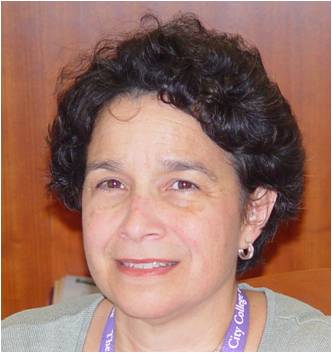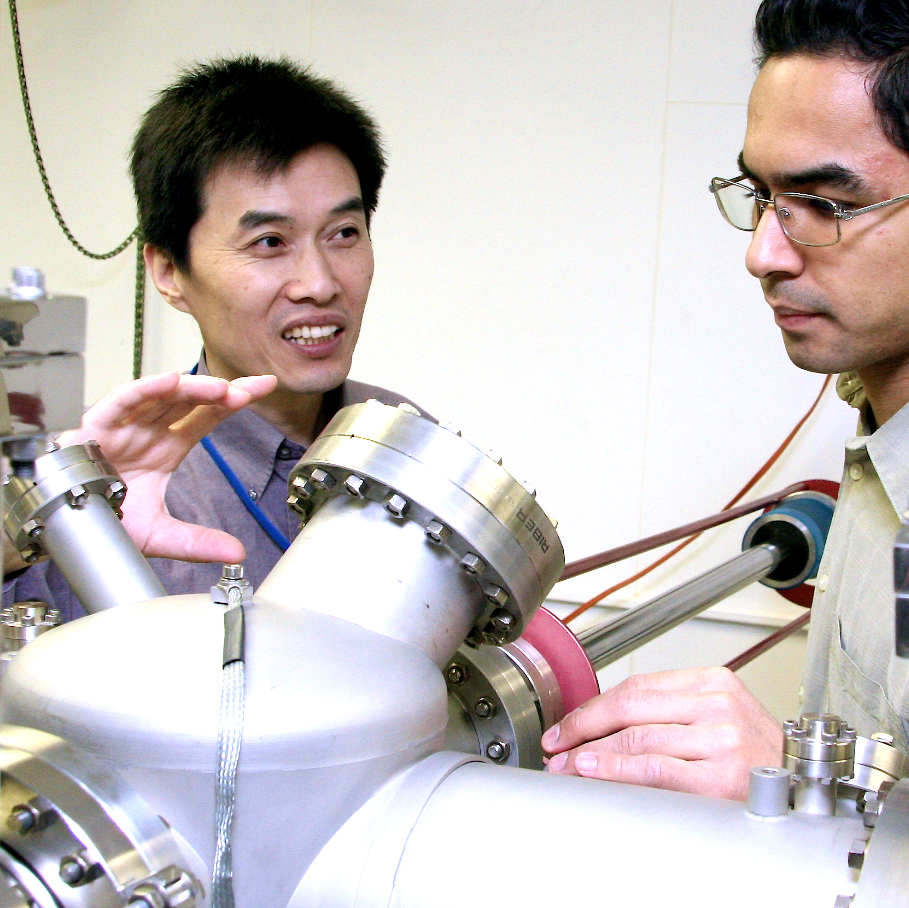Professors Tamargo and Shen Apply Molecular Beam Epitaxy to Develop New Materials, Devices
Molecular beam epitaxy (MBE) is a technique for producing thin films of ultra-pure semiconductors by depositing single crystals of an element on a substrate material. Because it offers the highest degree of control and flexibility among semiconductor production techniques, MBE is essential to research and development applications.
At The City College of New York (CCNY), two professors conduct research using MBE. Dr. Maria Tamargo, Professor of Chemistry, and Dr. Aidong Shen, Assistant Professor of Electrical Engineering, have three MBE chambers between them. In Professor Tamargo’s laboratory, two of the chambers are connected by an ultra-high vacuum tube that enables them to be used in tandem or separately.
Both professors played pivotal roles in the 2009 North American Molecular Beam Epitaxy Conference held in August at Princeton University that drew more than 200 representatives from academia and industry and produced more than 110 papers. Professor Tamargo served as conference co-chair and Professor Shen is editing the proceedings, which are to be published next spring in the “Journal of Vacuum Science and Technology B.”
In an MBE chamber, elements to be placed on a substrate are heated in a vacuum until they evaporate. The atoms then condense on the substrate surface. “In an MBE chamber you can do this at a precisely controlled rate and the atoms can move around on the (substrate) surface until they form a highly ordered crystal,” explains Professor Tamargo.
Most of the work being performed in Professor Tamargo’s lab revolves around developing materials for quantum cascade lasers. These are structures consisting of approximately 1,000 ultra-thin layers of varying thickness, each designed to give the structure as a whole a precise band structure.
“The composition and thickness is adjusted at nanoscale, all precisely determined,” she continues. “We use modeling software to model the materials and then write a program that enables a computer to control the process. The program generates instructions on the thickness and composition of the layers that are put into to the MBE controller. At the end we get a multi-layered structure from which we can fabricate a quantum cascade laser.”
Professor Tamargo’s research is part of the MIRTHE (Mid-Infrared Technologies for Health and the Environment) project, a collaboration among CCNY, Princeton, Rice University, Texas A&M, The Johns Hopkins University and University of Maryland – Baltimore County. One of her collaborators, Princeton Professor of Electrical Engineering Claire Gmachl, director of MIRTHE, is a leader in developing new quantum devices and was her conference co-chair.
Most of Professor Gmachl’s devices use III – V semiconductors, materials made from elements in Groups III and V of the Periodic Table of Elements. Professor Tamargo is producing semiconductors made from element in Groups II and VI. “The II – VI devices should be able to reach shorter wavelengths than with the III – V semiconductors,” she points out.
While the research continues, Professor Tamargo has succeeded in getting the devices to emit light in short wavelengths. She was invited to speak on her findings at a conference on II – VI materials held in Russia in late August.
Professor Shen is using the MBE chamber in his laboratory to grow wide band gap oxide materials and to fabricate various photonic and microelectronic devices. His focus is on ultraviolet emitters and detectors as well as intersubband devices for infrared emitters and switches used in high-speed optical communications.
Another key interest for him is developing new semiconductor spintronic materials, which are semiconductor materials containing small amounts of magnetic ions (diluted magnetic semiconductors). He was the first person to introduce a magnetized ion into gallium arsenic and realized ferromagnetic semiconductors operating above the temperature of liquid nitrogen.
This material is now being used to study fundamental physical properties and explore new device concepts that do not exist in conventional semiconductors or magnetic materials. Such materials will have applications in quantum computing by manipulating the spin of electronics, he points out.
“When you put magnetic ions in a semiconductor, you can use both the spin and the charge of the electrons simultaneously to create new functionality,” he explains. “The device will run faster and consume less power, and will be able to do information processing and storage at the same time.”
MEDIA CONTACT
Ellis Simon
p: 212.650.6460
e:
esimon@ccny.cuny.edu